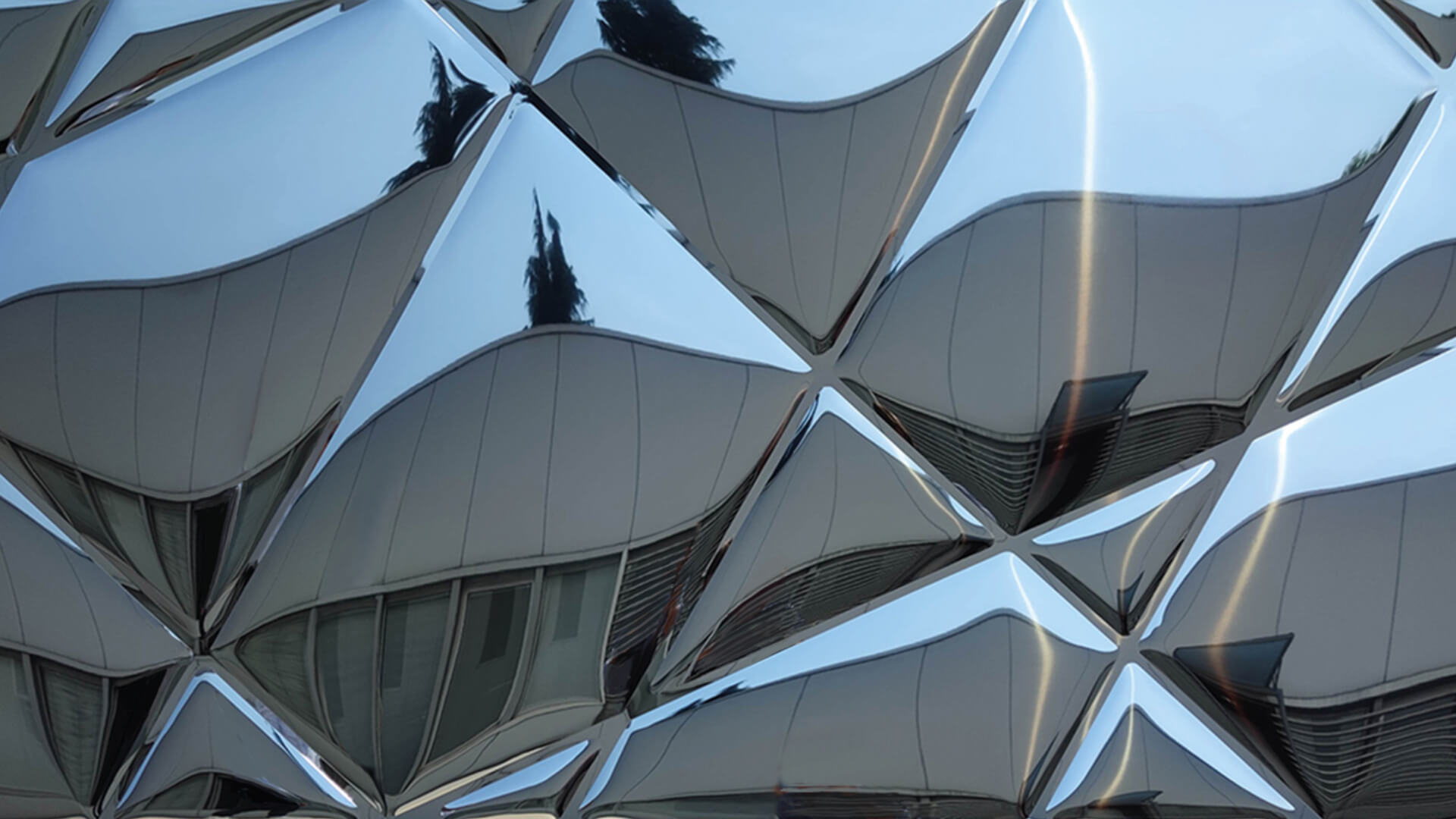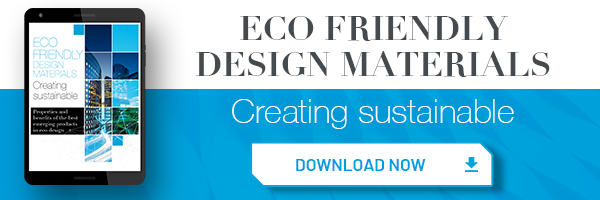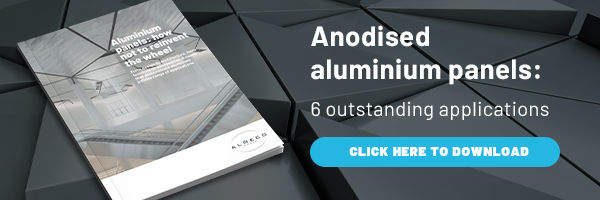An eco-friendly and sustainable material, popular with architects, engineers and interior designers to build façades, creative furniture, and characterful surfaces. Anodised aluminium allows for a wide range of applications in the fields of construction and architecture, interior design and furniture, and in the development of industrial design objects.
But why is this material so popular in the world of architecture? It is 100% recyclable, extremely durable, light and malleable, resistant to corrosion, adverse weather, scratches, abrasion, and UV radiation. There are certainly many characteristics that make anodised aluminium special. But one quality in particular has made it one of the most desirable materials for designers over the years: it can be customised in an infinite number of versions, thanks to the practically unlimited textures, colours and finishes that can be achieved during the machining process.
Anodised aluminium texture: perfection as in nature
The use of aluminium in architectural projects is a sustainable and aesthetically sound choice. In fact, it can take on the exact likeness of precious materials and rare stones that are difficult to find in nature or very expensive or whose extraction and processing is extremely impactful in terms of energy and environment.
The anodising of aluminium, on the other hand, is a process that results in a perfect surface that can substitute steel, brass, gold, bronze, copper, and tin. By using aluminium in the construction of façades, it is possible to achieve aesthetic perfection with an extremely uniform mirroring effect, creating buildings with a strong scenic and stylistic impact, capable of reflecting the light and architectural lines of the surroundings.
Conversely, there are places and structures where surfaces need to have a matt finish. Even in this case, aluminium is the best choice, as it can be produced in line with structural needs, in a perfectly matt finish with a smooth appearance over the entire surface, thus contributing to visual comfort and the right balance between natural and artificial light.
The perfect linearity and flatness of the surfaces ensure a highly appreciable aesthetic result. Contrary to what one might think, the structure of aluminium allows for ease of processing even when dealing with large sheets, unlike other much more rigid materials. Other special anodised aluminium textures and effects that can be achieved in the field of interior design are three-dimensional surfaces, changing and iridescent surfaces, or even draped as if they had the exact appearance of a fabric. Objects coated with anodised aluminium become true sculptures, which come to life and create reflections, plays of light and shadow, and decorative motifs.
The textures of anodised aluminium
Technically, it is possible to work the aluminium by combining colours and finishes to achieve customised and practically infinite results. The starting point is the texture obtained during the production process, which can be mirror, brushed, satin or embossed.
Popular in architecture, the brushed texture has an appearance in which the roughness is uniform and homogenous, sensitive to the touch. It is created through an ad hoc rolling process, also used for the development of the mirror finish; the polished surface, in this case, makes the aluminium look like a perfectly reflecting mirror.
To create the satin finish, it is necessary to subject the aluminium to a delicate chemical process that ensures that the colour remains homogenous everywhere, as well as the appearance. The texture is soft and velvety and allows you to play with the light and shadows of spaces.
Embossing is a special mechanical process that allows decorations, patterns or textures in relief to be impressed on the surface, giving unique perceptions. The surface effects obtained mechanically, such as hammered or puttied, give the aluminium great intensity, making it alive and vibrant, capable of evoking special tactile sensations.


